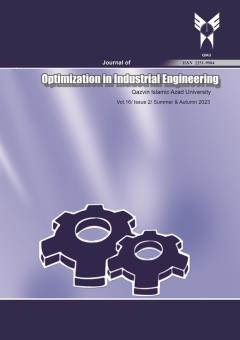Stable economy status has made many foreign investors invested in various industries sectors in Malaysia. Therefore, rapid development of industrial sector has caused the energy demand to increase tremendously year by year. To continue attract foreign investors, Malaysi
More
Stable economy status has made many foreign investors invested in various industries sectors in Malaysia. Therefore, rapid development of industrial sector has caused the energy demand to increase tremendously year by year. To continue attract foreign investors, Malaysia has taken various efforts to maintain economic stability by developing a sustainable energy sector to ensure electricity demand is sufficient for industries with less cost, reliable supply, and also less impact to the environment. However, over dependence on fossil fuels as the main energy source could not guarantee the energy security and also could evoke issues of environmental problem mainly the increase in carbon dioxide (CO2) emission in the atmosphere. In this study, a linear programming model and mixed integer linear programming optimization model under carbon constraints was developed to address issue of rising atmospheric concentrations of CO2 from energy sector. The developed model was able to determine the optimum energy sources mix which is most economical and to satisfy the forecasted electricity demand at Tanjung Bin Power Station (TBPS) in Iskandar Malaysia region. The model includes energy source switching and analyzing different renewable energy technologies such as biomass system, biogas system, solar thermal and photovoltaic (PV) plant in power generation. The applicability of the model was tested on various CO2 emission reduction targets which is at 6, 25, 40 and 50 % under several scenarios either without or with government subsidy. The results in this study indicated that the optimum energy source mix for TBPS is the mix of coal and solar energy (mainly solar thermal for without government subsidy and solar PV for with government subsidy). The results show that with government subsidy, the electricity tariff was acceptable for the consumers. The average electricity tariff at 6, 25, 40 and 50 % CO2 emission reduction is RM 0.35, RM 0.44, RM 0.51 and RM 0.57 per kWh, respectively. Increase of CO2 emission reduction show increase in electricity tariff compared to current tariff at RM 0.21 per kWh. Finally, by applying energy source switching, TBPS can significantly reduce CO2 emission by avoiding 1.00 Mt of CO2 emission at 6 % of CO2 emission reduction, 4.14 Mt of CO2 emission at 25 % of CO2 emission reduction, 6.63 Mt of CO2 emission at 40 % of CO2 emission reduction, and 8.28 Mt of CO2 emission at 50 % of CO2 emission reduction by 2030.
Manuscript profile


